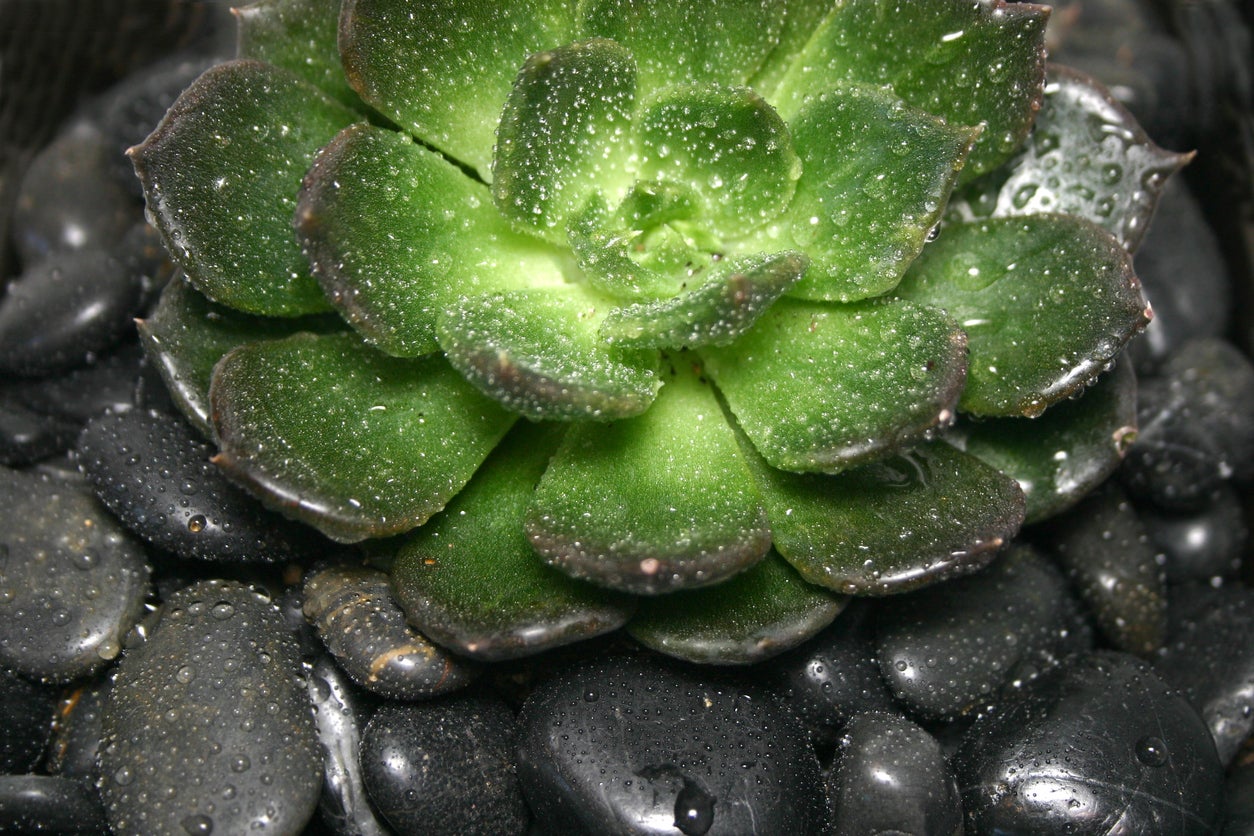Echeveria ‘Black Prince’ – Tips For Growing Black Prince Echeveria Plants


Echeveria ‘Black Prince’ is a favorite succulent plant, especially of those who like the dark purple look of the leaves, which are so deep they appear black. Those looking to add something a little different to the landscape or container gardens will certainly enjoy this easy-care plant.
About Echeveria ‘Black Prince’
Leaves will first be green and darken as they mature. The center of the plant is usually green. A low grower, the Black Prince plant has a rosette that can reach 3 inches (8 cm.) across. It is attractive in mixed containers or planted together with a few of the same type. Black Prince succulent produces offsets, what we often call babies, that can fill your container and sometimes even spill over the sides. Offsets of the growing Black Prince echeveria grow from the bottom, growing upward against the mother plant. You may remove these babies to grow in other containers if you’d like. Plant the Black Prince plant on a mound of soil or in a container filled to the top for the best view of emerging offsets. The mature, happily growing plant blooms dark red flowers in late autumn to winter.
Growing Black Prince Echeveria
Black Prince echeveria care includes potting in proper soil, finding the right location, and limiting water. Never let water remain in the rosette of this plant. It can cause rot or fungal disease. Actually, with this echeveria and other succulents, it is best to water at the soil level, keeping the leaves fairly dry. Water sparingly, but provide more water in spring and summer. Let soil dry out between waterings. Cut back to less water in winter, sometimes once a month is appropriate. Black Prince echeveria care includes growing the specimen in a fast-draining succulent mixture, amended with coarse sand, pumice, or other additions normally used in a succulent soil mix. Locate your plant in a sunny spot. Full morning sun is best, but some afternoon sun fills the plant’s needs. Limit afternoon sun in summer, as it may harm leaves and roots in the hottest locations. This is easier when the plant is in a container. If growing in the ground, plant in an area that gets afternoon shade. As the plant grows, bottom leaves will occasionally shrivel. This is normal and they should be removed. Keep all containers free of leaves and debris that encourage pests. Keep an eye on Black Prince for signs of mealybugs, the waxy white patches that may appear on leaf axils or other parts of the plant. If you see ants around your plants, take precautions. These are sometimes a sign of other pests, like aphids, and have the potential for creating honeydew.
Sign up for the Gardening Know How newsletter today and receive a free copy of our e-book "How to Grow Delicious Tomatoes".

Becca Badgett was a regular contributor to Gardening Know How for ten years. Co-author of the book How to Grow an EMERGENCY Garden, Becca specializes in succulent and cactus gardening.